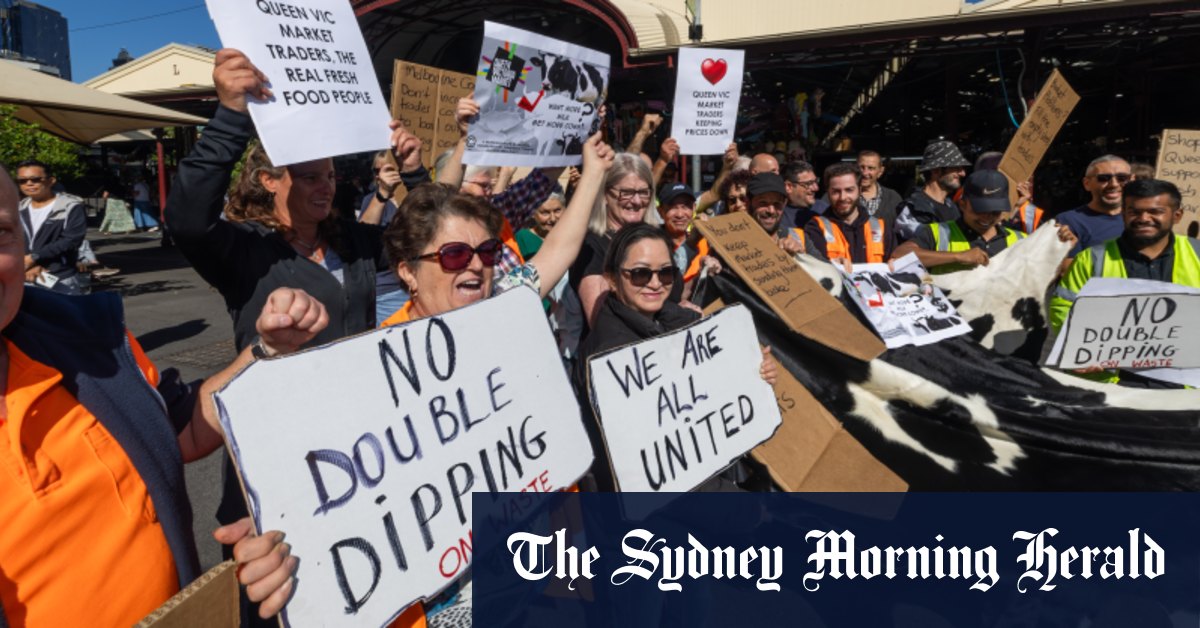Australia
Essential retail or museum of Melbourne history? Fears for the Queen Vic Market’s future

Rising Costs and Trader Concerns
The Queen Victoria Market (QVM) in Melbourne, a cherished landmark, is at the heart of a brewing storm as traders confront escalating operational costs. Over the past decade, QVM reports a 30% increase in expenses, aligning with inflation, while trader rents have risen by 12%. This surge has left many traders struggling to sustain their livelihoods. Once home to 60 fruit and vegetable traders, the market now hosts only 35, with fears this number may dwindle further if additional waste and cleaning fees are imposed. For traders like Rosa Ansando, a third-generation vendor, the burden is palpable.Despite their dedication to the demanding, 12-15 hour workdays, many feel they cannot afford another expense, especially as customer numbers dwindle. The introduction of a waste management fee has been met with resistance, with traders accusing QVM of "double-dipping," as they already pay stall fees. This financial strain, coupled with a perception of neglect from management, has fostered a sense of betrayal among traders, who feel pushed out in favor of corporate interests.
Protest and Strike
The tension reached a crescendo during a recent strike, where fruit and vegetable traders united, marching through the market with placards. Their stance was clear: "A fresh food market, not an event space." This rally garnered support from other traders, reflecting a broader solidarity. The strike underscored the traders’ belief that QVM’s priorities have shifted away from its primary role as a marketplace. While dairy and deli sections remained operational, the symbolic act of protest highlighted the traders’ determination to preserve their heritage. The strike also revealed underlying fears about the market’s future, with some questioning whether it might become a relic of the past without urgent attention.
Changes in Market Dynamics
QVM’s evolution from a traditional marketplace to an event-focused venue has sparked considerable debate. Events like sake and Indonesian festivals, while popular, have drawn criticism from traders who argue they detract from the market’s core purpose. These gatherings, they contend, do not attract more customers but instead alter the market’s ambiance, converting it into an event space rather than a hub for produce and goods. This shift has left many traders disheartened and concerned about their role in the market’s future. The introduction of food vans and corporate entities has further alienated traditional traders, who feel their interests are being marginalized in favor of a more commercial agenda.
Management’s Perspective
QVM’s management defends the changes as necessary adaptations to a competitive retail landscape. CEO Matt Elliott emphasizes the need to evolve, highlighting the pressure from supermarkets and changing consumer preferences. According to Elliott, events attract diverse clientele, offering traders opportunities to showcase unique products. He argues that these gatherings blend leisure with shopping, aligning with modern consumer behavior. The new waste management fee is framed as a fair measure to manage rising costs, encouraging sustainable practices. Elliott suggests that separating waste could reduce expenses, benefiting both traders and the environment. However, this rationale has not swayed traders, who remain skeptical of management’s intentions.
Community and Heritage
Beyond economic concerns, the market’s cultural significance looms large. As a National Heritage site, QVM holds a special place in Melbourne’s identity. Mary Lou Howie of the Friends of QVM highlights the market’s decline, with a third of traders exiting in recent years. She fears that proposed developments, such as the Gurrowa Place project, threaten its heritage, potentially transforming historical sheds into fine dining spaces. Howie’s perspective underscores the tension between progress and preservation, with many advocating for the market’s role as a cultural treasure. This debate raises questions about QVM’s identity—is it a vibrant business or a preserved historic site?
The Future of QVM
The market’s future remains uncertain, with its identity hanging in the balance. Traders and advocates urge preserving its heritage, viewing it as an irreplaceable cultural asset. Yet, QVM’s management and the City of Melbourne push for modernization, aiming to attract new audiences while addressing rising costs. The broader question, as economist Marcus Spiller notes, is whether QVM should be treated as a business or a public good. While traders deserve fair utility costs, the market’s cultural value cannot be overlooked. Striking this balance is crucial for QVM’s survival. As Melbourne evolves, so too must its iconic market, but not at the expense of its soul.











